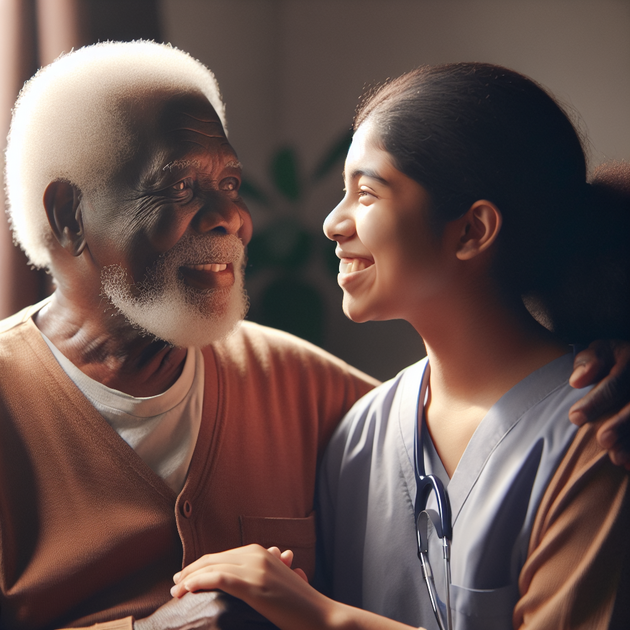Imagine a future where people with Alzheimer’s can still recognize their friends and family. That’s the promise behind new research into social memory, the brain’s ability to remember familiar faces and relationships. It matters because this is one of the most heartbreaking parts of the disease—and understanding it could guide new treatments you can learn about or support today.
Why protecting social memory in Alzheimer’s matters
For decades, scientists have studied Alzheimer’s as a condition of general memory loss—forgetting names, dates, or where you left your keys. But recent work suggests something more specific happens when loved ones start to feel like strangers. A study shared on Reddit by user mvea points to a possible target: the structures around brain cells that maintain recognition circuits.
In lab mice, researchers found that keeping these supporting structures intact—using certain existing drugs—helped the animals remember which mice they had met before. Essentially, their “social memory” stayed online. It’s a small but promising step that shifts the focus from restoring all memory to protecting the specific connections that help us know who we love.
How social memory works—and how scientists aim to preserve it
Here’s a simple way to picture it: your brain has thousands of little “friend folders.” Each folder contains signals linked to familiar faces and voices. In Alzheimer’s, these folders get misplaced or corrupted when surrounding support cells break down.
Researchers are exploring how to prevent that breakdown:
- Identify vulnerable structures: They’ve zeroed in on extracellular matrices—protective nets around neurons—that seem crucial for recognition circuits.
- Test existing drugs: Some medications already used for other neurological conditions appear to stabilize these nets.
- Measure behavior: In controlled experiments, mice treated with such drugs remembered previously encountered mice instead of treating them like strangers.
- Map human parallels: Scientists are now comparing these mouse findings with human brain tissue and imaging data to see if similar protective patterns exist.
This step-by-step approach is careful and incremental. Rather than chasing a total cure—which remains elusive—researchers aim for preserving quality of life by keeping relationships intact longer.
A glimpse into daily life when social memory fades
Think of a woman named Clara who visits her husband every afternoon in his care home. On good days, he lights up at her voice; on bad days, he politely asks her name. The difference? Whether his social memory circuits are firing that day. For families like Clara’s, even one extra year of clear recognition would mean more shared stories and less heartbreak.
The new research doesn’t promise miracles yet, but it gives scientists a tangible pathway toward moments like those lasting longer.
The nuance: progress comes with limits
The idea that existing drugs might protect these neural nets sounds almost too tidy—and researchers acknowledge that early results are mostly in mice. Translating findings from animals to humans is notoriously hard; our brains process social cues through complex networks shaped by culture and personal history.
A contrarian view within neuroscience warns against over-focusing on single targets. Memory involves chemistry, yes, but also rhythms between different brain regions. Strengthening one link won’t automatically restore the chain. Still, many experts argue this targeted protection approach could complement broader therapies like lifestyle interventions and anti-amyloid drugs already being tested in clinical settings such as those described by the Alzheimer’s Association.
If anything, this nuanced stance invites balance: use what we know about molecular repair without ignoring emotional and environmental factors that shape memory day by day.
Quick wins for supporting brain connection health
You don’t need a lab coat to take small steps inspired by this research. While scientists test drugs in animals, you can reinforce your own “social memory” networks right now:
- Stay socially active: Regular contact with friends keeps recognition circuits engaged.
- Challenge your recall: Look through old photos and name everyone out loud—it strengthens face-name links.
- Nourish your neurons: Diets rich in omega‑3s and antioxidants may support cell membranes crucial for signaling.
- Sleep well: Deep sleep helps consolidate memories into long-term storage systems.
- Support ongoing studies: Contribute to organizations funding translational research bridging animal models and human trials.
These aren’t magic bullets but practical habits grounded in neuroscience—the same science driving this new line of investigation.
The bigger picture for protecting social memory in Alzheimer’s
The beauty of this discovery is its humility. Instead of claiming they’ve solved Alzheimer’s, scientists admit they might have found one thread worth pulling—a structural clue about why some memories vanish faster than others. By focusing on the scaffolding that helps neurons communicate socially, they open a fresh angle for both drug developers and caregivers.
If researchers confirm similar structures play a role in humans, clinicians might one day prescribe medications not just for general cognition but specifically for relationship preservation—imagine treatment plans aimed at helping someone keep recognizing their spouse or grandchildren longer. That emotional continuity could redefine what “living well with dementia” means.
This focus also reminds us how intertwined biology and experience really are. The same molecular nets stabilizing neuron signals may underlie something as intangible as love recognized across decades. It’s science meeting humanity at eye level—a rare kind of progress worth following carefully rather than hyping blindly.
A closing thought
The story of Alzheimer’s research often swings between hope and disappointment. Discoveries appear promising one year and fade out the next under clinical scrutiny. Yet every careful step adds another piece to a puzzle whose solution will likely be layered—biological protection plus emotional connection plus community support.
If maintaining social memory means preserving identity itself, then perhaps our next frontier isn’t just extending life but extending familiarity within it. What small connection could you strengthen today that your future self might be grateful to remember?
By Blog-Tec Staff — edited for clarity.

Leave a Reply